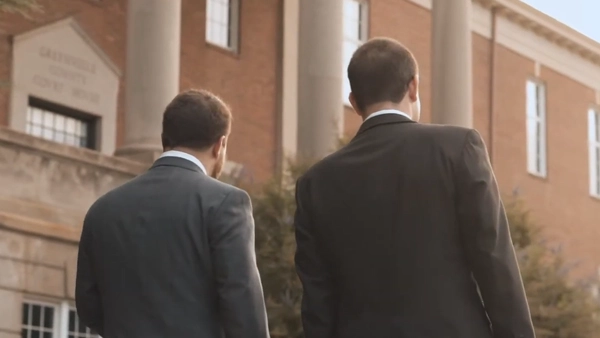Most people believe that the driver of the car that hits from behind is usually at fault. This assumption stems from the expectation that drivers should maintain a safe following distance and be prepared to stop if the vehicle in front slows down or stops suddenly.
However, determining fault isn’t always black and white. Many factors come into play when determining fault for a rear-end accident, and sometimes, the leading driver could share the blame—or even be entirely responsible.
The concept of modified comparative negligence means that each party’s actions leading up to the accident are scrutinized to assess their level of responsibility. This principle allows for degrees of fault to be assigned based on the specific circumstances of each case.
If you’ve been involved in a car accident, especially one as common as a rear-end collision, seeking legal guidance early can make a significant difference. At David R. Price, Jr., P.A., our team of Greenville rear-end car accident lawyers is dedicated to helping you navigate the complexities of fault determination. We’ll support you every step of the way.
Who Is at Fault in a Rear-End Collision?
The term “fault” refers to the attribution of responsibility or blame for an undesired or harmful outcome. It is standard practice to assess who is accountable for a particular event or accident.
However, the concept of fault is determined based on specific criteria and conditions.
Someone is considered to be at fault for an accident or incident only if the following conditions are met:
- Duty of Care: The individual must have a recognized duty to avoid putting others in harm’s way. This means that there must be an established legal or ethical obligation to act with reasonable care to prevent harm to others. In the context of a car wreck, drivers have a duty of care to avoid collisions with other drivers.
- Breach of Duty: The individual must have failed to uphold this duty by making unreasonably dangerous decisions, taking unsafe actions, or neglecting to act when they had an obligation to do so. If a driver’s actions or failure to act was not reasonable, then he may have breached his duty of care.
- Causation and Harm: The individual’s breach of duty must have directly caused an incident resulting in harm to another person. It is not enough that the person’s actions were negligent; those actions must have directly led to an injury or loss. This harm can include physical injuries, emotional distress, or financial losses suffered by the victim due to the incident. If a driver’s unreasonable actions cause a car wreck that injures another person, then he is at fault for those injuries.
Common Causes of Rear-End Collisions in South Carolina
Rear-end collisions can happen for a variety of reasons, many of which are preventable. Some of the most common causes include:
- Speeding: Speeding reduces the time a driver has to react to changes in traffic. When traveling at higher speeds, even a slight delay in braking can lead to a serious rear-end collision.
- Tailgating: Following too closely, or tailgating, is another frequent cause of rear-end accidents. When a driver doesn’t maintain a safe following distance, they may not have enough time to react if the car in front suddenly slows down or stops.
- Poor Weather Conditions: Rain, fog, and ice are common in South Carolina, particularly during the winter months. Slick roads and reduced visibility make it harder for drivers to stop in time. Even a cautious driver can misjudge stopping distances in poor weather.
- Mechanical Issues: Sometimes, the problem isn’t with the driver but the vehicle itself. Worn-out brakes, bald tires, or faulty brake lights can prevent a car from stopping in time or alerting other drivers to slow down. Regular vehicle maintenance can help reduce this risk.
- Road Hazards and Traffic Flow: Construction zones, potholes, and erratic traffic patterns can all contribute to rear-end collisions. Drivers who brake suddenly to avoid a hazard may inadvertently cause the vehicle behind them to crash.
- Distracted Driving: Distracted driving includes texting, scrolling through social media, eating, or even talking to passengers. Distracted driving is a leading cause of rear-end collisions, because a moment of distraction can leave a driver with too little time to stop.
- Driver Impairment: Alcohol or drug impairment slows reaction times and affects a driver’s judgment, making it more likely for a driver to cause a rear-end accident. Fatigued driving can have similar effects, with drivers falling asleep or zoning out behind the wheel.
How a Lawyer Can Help Establish Fault in a Rear-End Car Accident in South Carolina
While it’s true that, in many cases, it can be assumed that the trailing driver is the one who is at fault, determining liability isn’t always black and white. That’s where an experienced Greenville car accident lawyer can make all the difference.
Here’s how we can help you establish fault and build a strong case:
1. Thorough Investigation
We start by digging into the details of your accident. This includes visiting the scene, examining the damage to both vehicles, and gathering critical evidence such as skid marks, debris patterns, and photographs. These details can reveal how the collision occurred and who was at fault.
2. Analyzing the Police Report
Police reports are often pivotal in determining fault. They may include statements from both drivers, witness accounts, and any citations issued at the scene. We review these reports carefully to identify key information that supports your case.
3. Gathering Witness Testimony
Eyewitnesses can provide invaluable insight into what happened. If someone saw the other driver texting, speeding, or tailgating before the crash, their testimony can significantly strengthen your claim.
4. Leveraging Expert Opinions
Sometimes, we enlist the help of accident reconstruction experts to recreate the events leading up to the collision. Their findings can offer a professional, science-based perspective that is difficult for the other side to refute.
5. Dealing With Insurance Companies
Insurance adjusters are trained to protect their company’s bottom line, which often means downplaying your claim or shifting blame. As your lawyers, we handle all communication with the insurance company to ensure you are treated fairly and receive the compensation you deserve.
6. Representing You in Court
If a fair settlement cannot be reached, we will advocate for you in court. We will present your case to a judge and jury, seeking justice and the compensation you deserve.
Contact our Greenville Car Accident Lawyers
If you’ve been involved in a rear-end accident, it’s crucial to seek legal representation quickly.
Whether you’re facing injuries, property damage, or both, our goal is to provide you with the clarity and support you need during this challenging time.
Our law firm will thoroughly investigate, leverage our resources and expertise to gather crucial evidence, and advocate on your behalf. At David R. Price, Jr., P.A., our aim is not only to establish fault but also to help you recover physically, emotionally, and financially from the impact of the accident.
Contact us at 864-271-2636 to schedule a free consultation and take the first step towards reclaiming control of your life after a car accident.







